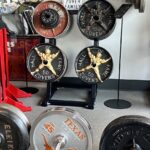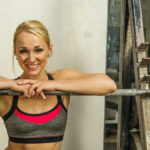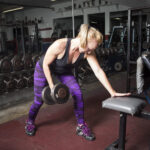How much does a barbell weigh? There’s a short answer and a long answer, and I’ll tell you both.
(Nerd alert, I’m going to get in the weeds about barbells here! I love barbells. I collect barbells. I had a dream I had 7 more barbells as I was writing this post lol)
- Short answer: 45 pounds, or 20 kilograms.
- Long answer: 10 pounds, 15 pounds, 35 pounds, 10 kilos, 20 kilos, 45 pounds, 70 pounds, and more.
If you’ve ever been new in a gym, you know you have to familiarize yourself with the equipment. You’ll usually see what you consider standard barbells, and you can assume they weight 45 pounds. Most barbells do. But, there are so many specialty bars, and it seems like there are more being made every day. They’re pretty fun, too! If you’re lucky, you’re in a gym that has many of these barbells, so you can play with them all.
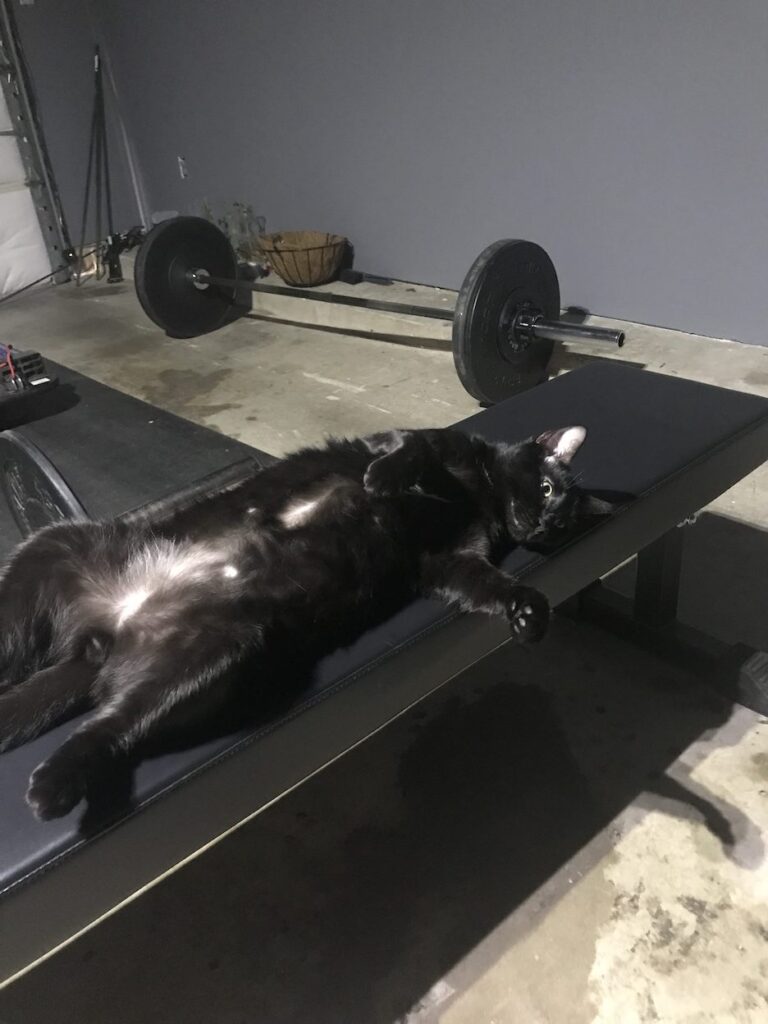
Check out this guide so that you can distinguish different types of bars and know the weight of the barbell you’ll be training with.
How Much Does a Standard Barbell Weigh?
As I mentioned above, the most common barbell weighs 45 pounds, which is about 20 kilograms. Twenty kilograms equals 44.1 pounds, but most everybody says 45. Most Olympic barbells and power bars weigh this. If you’re in commercial gyms or mainstream big box gyms, this is probably what you’ll encounter. Unless it is notably different in size or is marked, you can probably safely assume a bar is 45 pounds.
Note that sometimes a bar is called a standard bar, and this is the skinny bar that you can buy from Academy or Dick’s Sporting Goods. These have a small diameter and don’t weight 45.
When you hear people colloquially say “standard bar”, it usually means what is generally found in gyms. Those are 45 pounds.
Marking Barbells
You’ll see that some gyms mark barbells with different colored tape on the collars. This helps distinguish which bar is which. I don’t think there is a standard across gyms in America for barbells colors, but please correct me if I’m wrong.
For example, at Big Tex Gym where I train my clients now, the squat bar is labeled in yellow tape. The deadlift bars are labeled red, power barbells are labeled blue. Bent or damaged bars are labeled with gray. These are nice to keep around too, in case you are doing rack pulls or other lifts that are hard on the bar. This way you can use the gray bar and not ruin a $850 Eleiko.
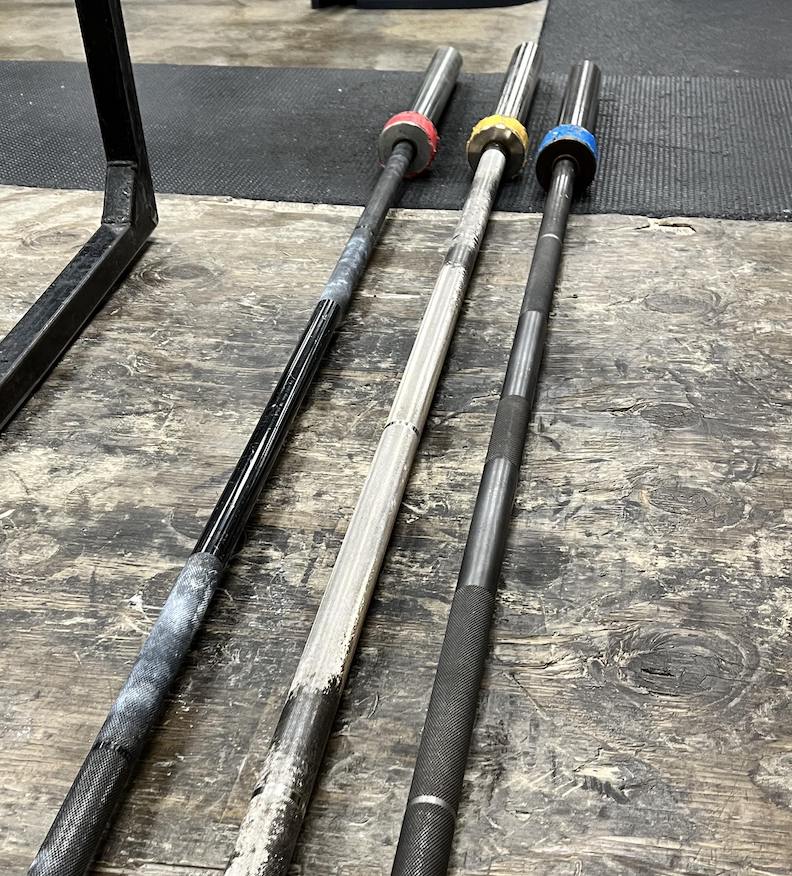
If you’re doing a heavy bench press or squat though, you do NOT want the bar to rotate in your hand because you unknowingly loaded up a bent bar. This is also why I chase down people who are abusive to bars in the gym. If I’ve done that to you, sorry not sorry.
Different Types of Barbells
There are sooo many different types of barbells! I LOVE this, because it’s cool for the barbell to fit your specific lift and your specific goals. There are squat bars, deadlift bars, training bars, cambered and bent bars, bars in other atypical shapes, and many more. They began as a straight metal bar, but there are so many variations now! Each of these bars has a different purpose and was created for a specific reason. It makes sense to know the use of a bar and the weight of a barbell before you get started training with it.
Olympic Barbells
A standard Olympic barbell is 45 pounds, typically has knurling for your grip but no center knurling, and spins really well. This is crucial for the Olympic lifts, since the clean requires the bar come into contact with the skin around the collarbones, neck and shoulders. An exception to this weight is that women’s bars for Olympic lifting are 15 kilos, which is about 33 pounds. Women’s bars are a bit thinner diameter too (25mm verses the men 28mm), which allows people with smaller hands to grip it better. Women can choose to train with a standard weight bar, but should train with the women’s barbell if they are training to compete. The International Weightlifting Federation uses women’s bars in all competitions.
Powerlifting Barbells
A straight barbell with good knurling, a power bar is probably the most common type of barbell outside of just regular barbells that are sold en masse from Amazon, etc. Power bars have great knurling both for grip, and center knurling for back squats.
To my knowledge, no powerlifting federations use different bars for men and women. The International Powerlifting Federation, USA Powerlifting (USAPL), and others do not use gender specific bars.
Here’s a list of various types of barbells commonly found in gyms and their uses:
1. Olympic Barbell
- Weight: 20 kg (44 lbs) for men, 15 kg (33 lbs) for women.
- Length: Typically 7 feet (84 inches).
- Use: Designed for Olympic weightlifting movements like the snatch and clean & jerk. The barbell has rotating sleeves for smoother lifts. It should go with out saying, but Olympic-style lifts should be performed with Olympic bars and Olympic plates.
- Features: Knurling for grip, whip (flexibility), and rotating sleeves for dynamic lifts.
2. Powerlifting Barbell
- Weight: Typically 20 kg (44 lbs).
- Use: A power bar is specifically for the big three lifts in powerlifting—squats, deadlifts, and bench presses.
- Features: Stiffer (less whip), more aggressive knurling, and usually no rotating sleeves (or less rotation).
3. Trap Bar / Hex Bar
- Weight: Typically 45-70 lbs, depending on the model.
- Use: Primarily used for deadlifts, shrugs, and farmer’s carries. The lifter stands inside the bar, allowing for a more neutral grip and upright posture during lifts. This makes the deadlift a bit less of a hinge, and slightly more like a squat. This uses your lower back a little less since you won’t have to hinge as much. Some people find they can use heavier weights here too.
- Features: Hexagonal or trapezoidal shape with handles on either side. There are many different manufacturers of these and they all have a unique shape.
4. EZ Curl Bar
- Weight: Typically 10-15 lbs.
- Use: Primarily used for biceps curls, triceps extensions, and other arm exercises. The wavy design of ez-curl bars reduces strain on wrists.
- Features: Shorter length and wavy shaft. The EZ bar is easy to grip. Since it’s not as long, it doesn’t hold as much weight. That’s typically not a limitation on biceps curls, though.
5. Swiss Bar (Multi-Grip Bar, Football bar)
- Weight: Typically 35-55 lbs.
- Use: Allows for multiple neutral grip positions, used for pressing movements (bench press, overhead press), and rows. Great for reducing stress on shoulders and wrists. This is pretty much a press and bench press bar. You won’t do lower body lifts with this.
- Features: Multiple parallel handles for different grip options.
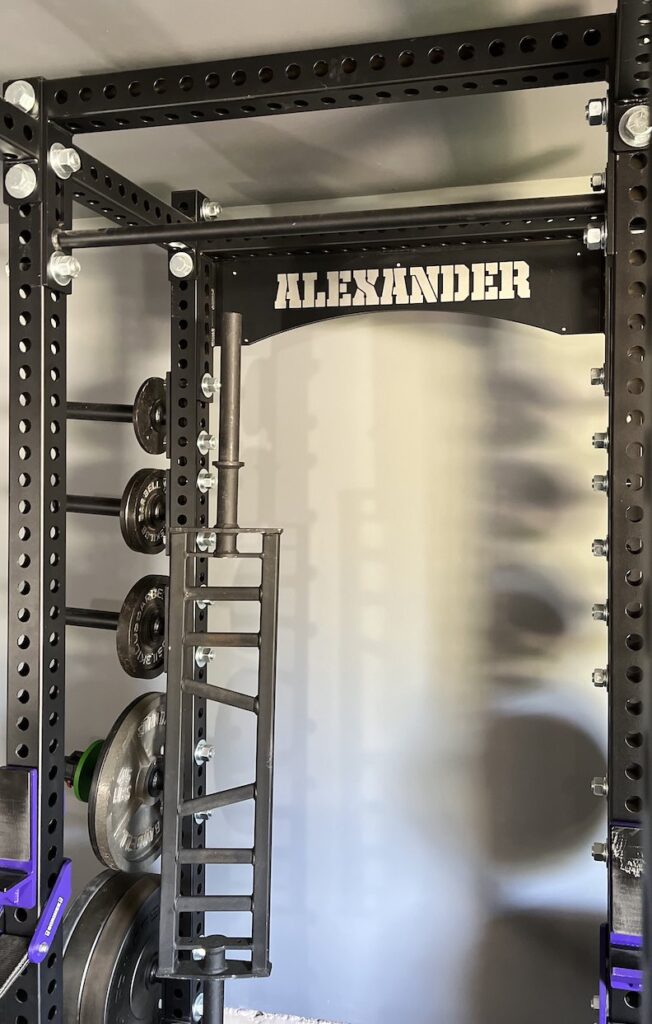
6. Safety Squat Bar
- Weight: Typically 60-70 lbs.
- Use: Designed for squatting, especially for those with shoulder mobility issues. The bar has padded shoulder rests and handles for easier squatting without shoulder strain.
- Features: The weight distribution is more forward, making the squat more quad-dominant.
7. Deadlift Bar
- Weight: 20 kg (44 lbs).
- Use: Specifically designed for deadlifting, this barbell has more flex (whip), allowing the lifter to pull more weight before the plates leave the ground.
- Features: Longer and thinner than a standard bar, with aggressive knurling for a better grip. The longer sleeve on this bar (the end of the bar) allows for very heavy loads, and can stand up to a huge total weight. The length of the barbell is something to consider if you have a home gym or garage gym. I love the whippy bar though. It’s fun to pull with!
8. Cambered Bar
- Weight: Typically 60-70 lbs.
- Use: Primarily used for squats and good mornings. The cambered shape of the bar shifts the weight distribution, making the movement more challenging for stabilizers.
- Features: A distinctive downward curve on the barbell, often with handles.
9. Log Bar (Log Press Bar)
- Weight: Typically 70-100 lbs.
- Use: Common in strongman training for overhead pressing movements.
- Features: Large, cylindrical shape with neutral grip handles in the center.
10. Axle Bar (Fat Bar)
- Weight: Varies, often around 45 lbs.
- Use: Used for grip strength training, overhead presses, deadlifts, and rows.
- Features: Thicker diameter than a standard barbell (usually 2 inches or more), making it harder to grip.
11. Technique Bar
- Weight: Typically 5-15 lbs.
- Use: Used to teach and practice proper lifting technique, especially for beginners or those recovering from injury.
- Features: Lighter weight than standard barbells, with the biggest difference being that they are often made from aluminum or other lightweight materials.
12. Women’s Olympic Barbell
- Weight: 15 kg (33 lbs).
- Length: Typically 6.5 feet (79 inches).
- Use: Designed for Olympic lifting for women, with slightly smaller diameter and length compared to the men’s version.
- Features: Same rotating sleeves and knurling as the men’s barbell but with smaller dimensions. The diameter of the bar helps with grip.
13. Squat Bar
- Weight: 25 kg (55 lbs).
- Use: Specifically designed for squats. These bars are stiffer and usually longer to accommodate wider grip positions.
- Features: Stiff bar, aggressive knurling, and a thicker diameter. A squat barbell can accommodate a huge amount of weight; load capacity is insane.
14. Buffalo Bar (Bowed Bar)
- Weight: Typically 45-55 lbs.
- Use: Mostly used for squatting, this bar has a slight curve that reduces strain on the shoulders and elbows, making it ideal for lifters with shoulder mobility issues.
- Features: A curved barbell that allows for more comfortable squatting or bench pressing.
15. Short Barbell
- Weight: 25-35 lbs.
- Use: Used in smaller spaces or for specific exercises like curls or presses where a full-length barbell is unnecessary. These are also great for home gyms or garage gyms when you don’t have a ton of room and don’t want to put holes in your walls.
- Features: Shorter than a standard barbell, often around 5 feet in length.
16. Youth Barbell
- Weight: Typically 10-15 lbs.
- Use: Designed for younger or smaller lifters to practice technique and build strength. This allows training plates and lighter loads to be used. Training plates are important because they are the same size as 45 pound weight plates, so people who can’t quite deadlift 135 (bar + two 45 pound plates) can still learn the deadlift with the exact same form.
- Features: Lighter and shorter than a standard barbell, often made of lightweight materials like aluminum. The lifter can develop strength here and add additional weight until they are able to use a standard barbell weight.
What Weight Barbell Should You Use?
Probably 45 pounds. If that is challenging for you, use a shorter barbell or training bar. Find the right weight for you, one where you can lift well for 8+ reps. If you have general fitness goals like getting stronger, toning up, losing weight and getting fitter, you can use pretty much any kind of bar. Traditional barbells are a great tool for so many uses, and various exercises. Don’t feel like you can’t make progress without all the fancy bars! Use proper form and work hard, and you’ll go far on your fitness journey.
If you have a home gym or garage gym, check out this article about how to maximize your gym organization, and how to store barbells.
One more common question I get is about smith machine bars and how much they weight. Smith machines, where the bar is on a guided track, vary widely. The Smith machine bar can be completely counterbalanced so that it weights nothing, or it can be closer to 45. Know this as you approach any smith machine, and be prepared for it to be heavy just in case. If that makes you nervous, just ask someone who works there. Most of us who work in gyms are equipment nerds and fitness enthusiasts who would be so happy to help you.
However. It’s more FUN to use specific bars 
Work With Me!
If you are looking for a personal trainer in Austin, I’d love to talk with you! If you are not in Austin, Round Rock, or central Texas, let’s talk about online training.
Message me here for a free consult about personal training in Austin, Texas, or here for online personal training, and we’ll discuss your goals, background, equipment availability, schedule, and exercise preferences.
Let’s get you strong and healthy! 
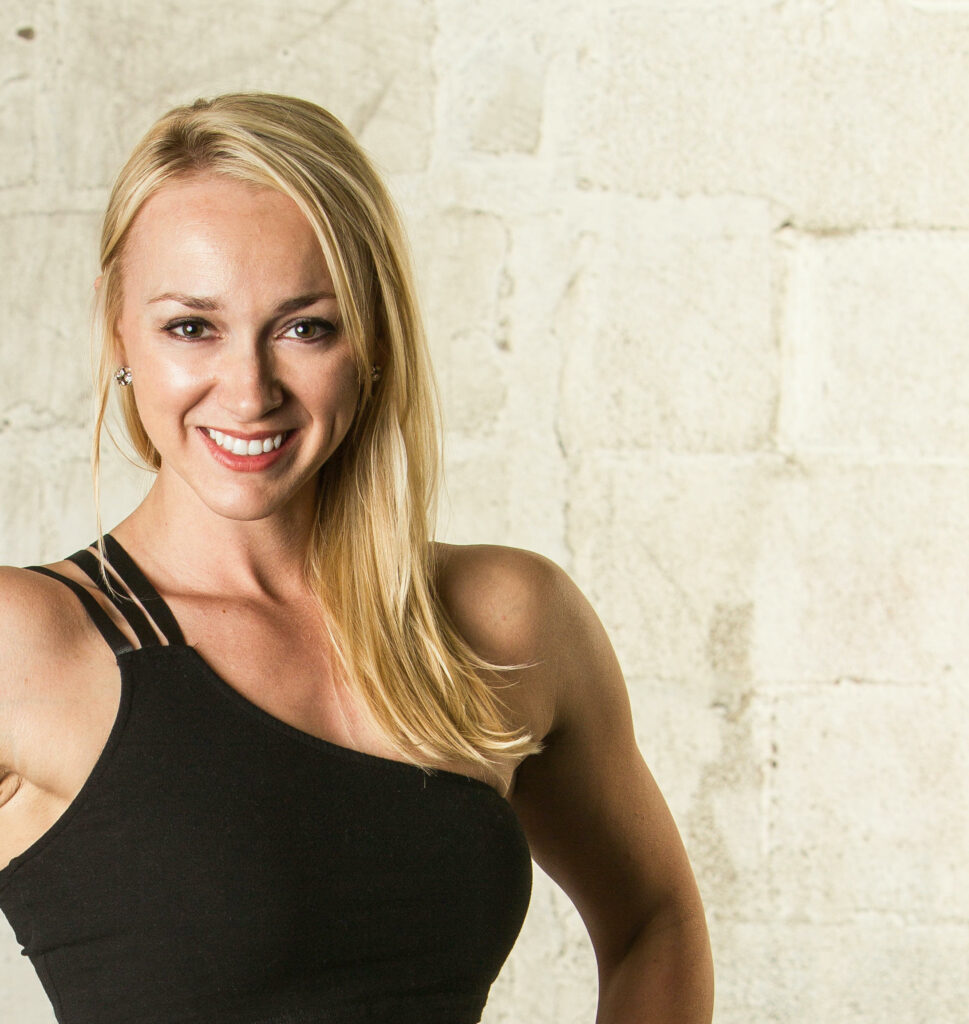
About the author
Kathryn Alexander is a strength coach and personal trainer in Austin, Texas. She loves hiking, college football, and the feel of a perfectly knurled barbell. Read more about Kathryn here.

